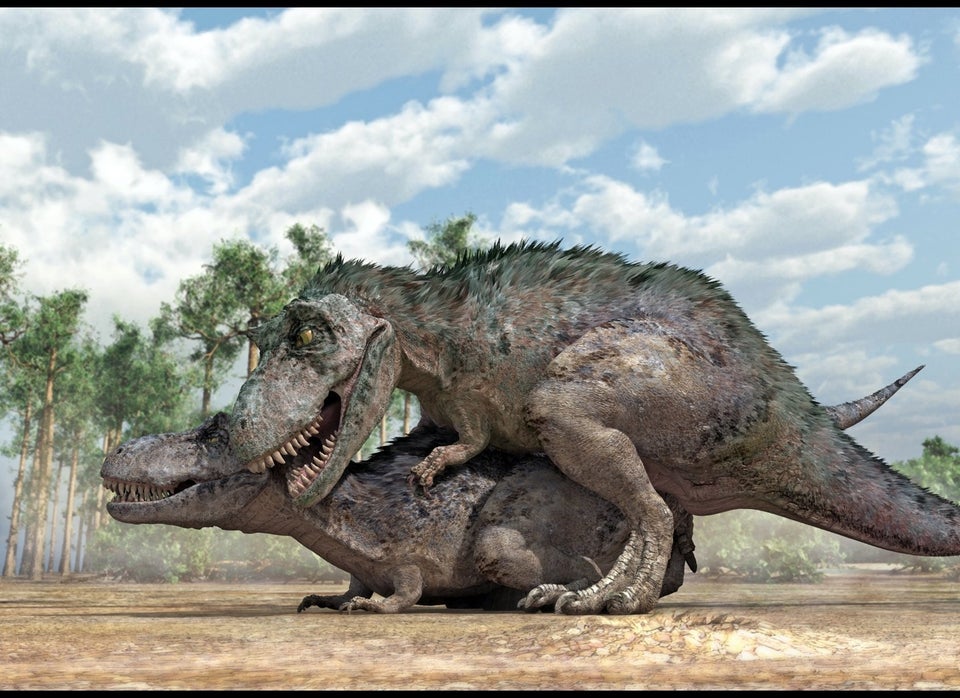Scientists have discovered what they believe is a pregnant Tyrannosaurus Rex -- and it might even still contain dino DNA.
Tests conducted on the fossilized femur of a 68-million-year-old T. Rex revealed the presence of medullary bone, or a type of bone that forms only in female birds before or during egg-laying, according to a news release from North Carolina State University.
“It’s a dirty secret, but we know next to nothing about sex-linked traits in extinct dinosaurs," Lindsay Zanno, assistant research professor of biological sciences at the university and co-author of the new study, said in the release.
"Dinosaurs weren’t shy about sexual signaling, all those bells and whistles, horns, crests, and frills, and yet we just haven’t had a reliable way to tell males from females," Zanno said. "Just being able to identify a dinosaur definitively as a female opens up a whole new world of possibilities."

N.C. state paleontologist Mary Schweitzer spotted what she believed to be the medullary bone in the T. Rex sample in 2005.
“All the evidence we had at the time pointed to this tissue being medullary bone,” Schweitzer, who is lead author of the new study, said in the release. "But there are some bone diseases that occur in birds, like osteopetrosis, that can mimic the appearance of medullary bone under the microscope. So to be sure we needed to do chemical analysis of the tissue."
The new study focused on that analysis, comparing the dino bones to the medullary tissue of ostriches and chickens.
It was a match.
One test looked for a substance called keratan sulfate, which is found in medullary bone but not other types of bone.
Scientists thought this substance might not survive the passage of millions of years, but it turns out it did.
And if that can still be detected, there may be hope that a sample of dino DNA is still waiting to be found.
"Yes, it's possible," Lindsay Zanno told Discovery News. "We have some evidence that fragments of DNA may be preserved in dinosaur fossils, but this remains to be tested further."

